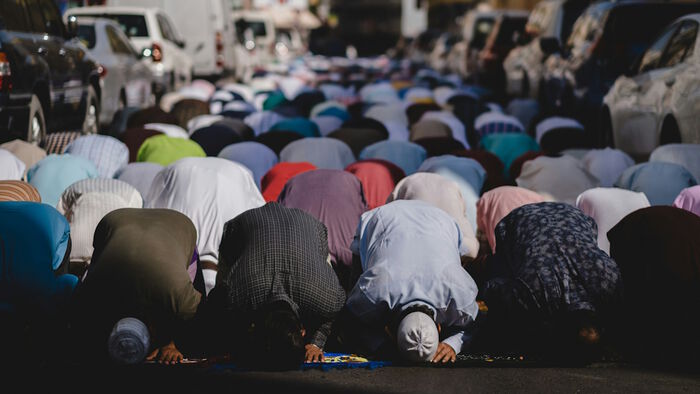2020
As seen on January 6th, 2021, once disparate tendencies within the radical right are mixing and collaborating as never before. The very core technological features of the internet and world wide web have played a crucial role in this process of integration.
The Supreme Court of Finland issued a ban on the neo-Nazi Nordic Resistance Movement in the September of 2020. The historical decision follows a case that has been ongoing for several years and has already seen the Finnish right-wing extremist scene change in different ways.
While the year 2019 in Western Europe was neither very violent in terms of fatal attacks, nor particularly deadly in terms of fatalities, we witnessed a worrying emerging global trend of right-wing lone-actor terrorists carrying out, or trying to carry out, mass-casualty attacks. Here are some main findings from the RTV Trend Report 2020.
No other country in Western Europe has in recent decades experienced as much severe and deadly right-wing violence as Germany. Moreover, the nature of this violence is more complex than in other countries, making it even more difficult to prevent.
Few countries in Western Europe experience as much severe right-wing violence as Spain. However, the nature of right-wing violence in Spain differs from most other countries as it is seems more related to old, rather than new, political conflicts.
On February 19th, a 43-year-old German man carried out a far-right terror attack in the city of Hanau, in central Germany. He shot nine people at two locations in the city centre, as well as his own mother before committing suicide. He left a lengthy manifesto outlining his anti-migrant and racist worldview. In a month marked by the breaking of the country's long-enduring political ‘cordon-sanitaire’ , coupled with evidence of extensive far-right terrorist mobilisation and its most deadly terror attack since 1980, it is clear that Germany’s institutions are at a critical juncture in the struggle against right-wing extremism.
In recent years, Greece has experienced more severe right-wing violence per capita than any other country in Western Europe. It is long past time for a more comprehensive and effective response to far-right extremism.
Far-right extremists are exploiting the fear and uncertainty of this global pandemic, and it’s high time that we also respond with necessary preventive action.
What makes people translate their thoughts and feelings into action? With hate crimes against asylum seekers on the rise across Europe, this question has become increasingly relevant today. C-REX affiliate scholar Iris Segers argues that we need to look more closely at protesting communities, and engage with their stories, in order to understand what drives mobilization against asylum seekers across Western Europe.
Ireland’s general election on 8 February saw a proliferation of radical right-wing candidates but did not herald the expected breakthrough of these parties. As Shaun McDaid explains, the little support for the radical right in Ireland is mainly explained by the ability of the political left to more effectively mobilise the electorate on issues other than immigration. While not counting on imminent success, the radical right in Ireland might nevertheless have the stamina to play the long game.
The Covid-19 crisis is exploited by Viktor Orbán to consolidate power and undermine democracy. The increasingly authoritarian Prime Minister has used the pandemic to further authoritarian ends. Democratic backsliding in Hungary has for long been a cause of concern for the European Union.
Activists wearing Yellow Safety Vests started taking the streets in France since October 2018. Many commentators linked their grievances to radical right and “anti-establishment” politics. Why is it not so simple?
Suicide attacks are virtually absent in far-right terrorism. A recent study of the subcultural, strategic, and historic references to martyrdom, self-sacrifice, and suicide in the contemporary far right shows the potential reasons for this, highlighting the peculiar political mythology of “martyrdom” that characterizes this extremist environment.
Multiagency collaboration structures are given a central role in preventing the recruitment of youth to extremism. In this study of Nordic policies developed to counter extremism and prevent crime, we have mapped and compared how multiagency collaboration is to be organized, what practices that are to be utilized and the legal frameworks that guides information sharing practices in collaborative work. The findings entail previously unknown discrepancies, similarities and differences between the Nordic countries that can help to inform a sometimes heated and polarized debate on how extremism is being handled.
In less than two weeks, and amid much turbulence, Poland will choose its next President. Far-right politics plays a complex role in the election. While incumbent Andrzej Duda adopted strong anti-LGBTQI stances in the first round, the run-off seems to become framed as a broader contest over voters of far-right challenger Konfederacja. For the liberal opposition such strategy might nonetheless turn out to be double-edged. The stakes are high, as the outcome of the close race between Duda and his pluralist challenger Rafał Trzaskowski can mark a turning point for liberal democracy in Poland.
Focusing on fixed categories of far-right membership both obscures an important source of information about the far right and mistakenly identifies youth as having static identifications with political and ideological scenes.
As the volume of research on terrorism and far-right extremism (FRE) grows, so too does a corresponding recognition for a need to pay greater attention to research methodology, especially as this applies to participant interviews.
Discussions on the fourth wave of far-right politics, referring to its mainstreaming and normalization, can not ignore the role of social media platforms in current-day politics.
Black Lives Matter has shaken up political discussions about racism across the globe. In the Netherlands, it has led to yet another escalation around the ‘Black Pete’ controversy, discussed in this blog earlier this year. Despite the widespread protests and the unprecedented public engagement against racism and police violence in the country, Iris Beau Segers argues that the empty rhetoric, inaction and opportunism of (radical) right politicians indicates their continued reluctance to tackle institutional racism at its roots.
The January 6 attack on the US Capitol was not unexpected. It was anticipated by numerous warning signs, and it built upon a years-long process of radicalisation that involves, but is not limited to, Trump supporters.
The RTV trend report recently published by C-REX shows that, since the 1990s, severe forms of right-wing terrorism and violence in Western Europe have decreased, particularly gang-related and unorganized forms of violence. Today, so-called ‘lone actors’ carry out most of the violence, a trend that has been reinforced by the emergence of various online platforms.
How did the global far right politicize Covid-19 ? How did far-right actors seize the public health crisis? In a comment for ISPI (Istituto per gli Studi di Politica Internazionale) Graham Macklin argues that the far right was quick to capitalize upon the Coronavirus pandemic too, though its response has varied widely across countries.
This week the Dutch Forum for Democracy (FvD) experienced yet another scandal, but this time the infighting did not favor Thierry Baudet. And so, four years after founding the party, and less than half a year before the next Dutch parliamentary election, Baudet has resigned as party leader, and withdrawn from the top spot on the electoral list, and we can all refocus our attention on the real leader of the Dutch far right, Geert Wilders.
White women have long been part of white supremacist movements in the U.S. and elsewhere. That continues today. But what place do they occupy in deeply misogynist movements that force white women into idealized categories of white mother, sexual partner, or racial fighter?
Policies to prevent radicalization and violent extremism frequently target militant Islamists, right-wing and left-wing extremists. In a recent study we have examined what distinguishes the ways in which local practitioners perceive and respond to each of the milieus. Our results show that there is a clear discrepancy between the uniform way violent extremism is presented in policy, and how front line practitioners experience the different forms of extremism at the local level.

RightNow!
Welcome to the “RightNow!” blog where you will find commentary, analysis and reflection by C-REX’s researchers and affiliates on topics related to contemporary far right politics, including party politics, subcultural trends, militancy, violence, and terrorism.
“RightNow!” also provides a platform for republishing op-eds by our core team of experts (with due acknowledgement of course) which have been published by newspapers and on other blogs in order to further highlight the breadth of our work here at C-REX. The articles give the views of the authors, not the position of the Centre for Research on Extremism.
To submit proposals and comments, contact the RightNow! editor Celestine Salomé Kunkeler.
.jpg)
.jpg?alt=listing)

